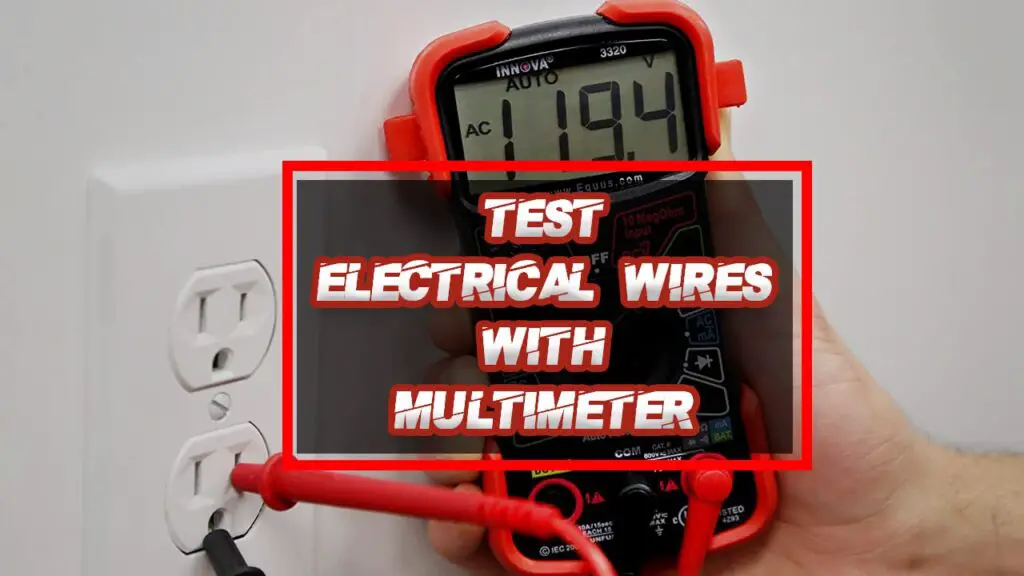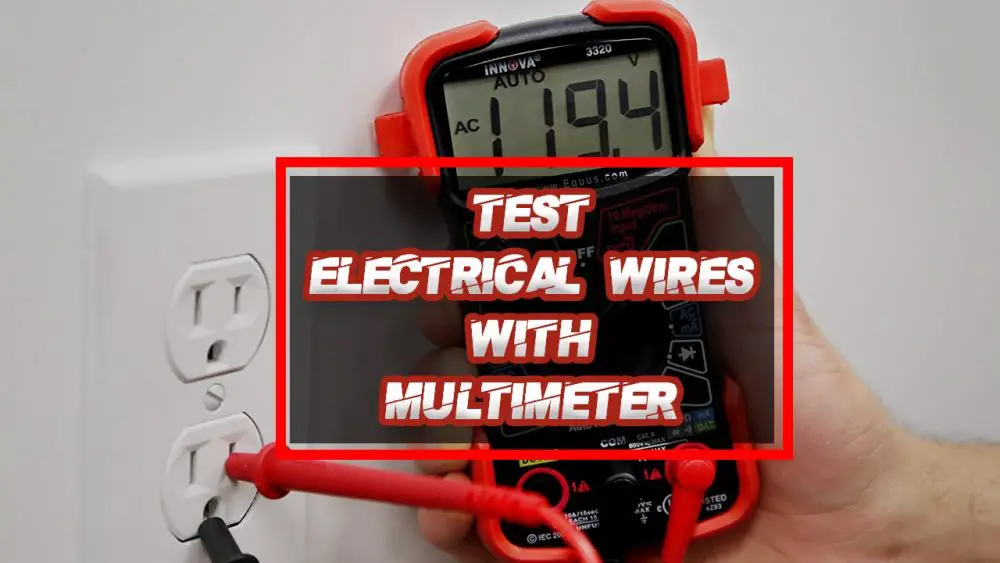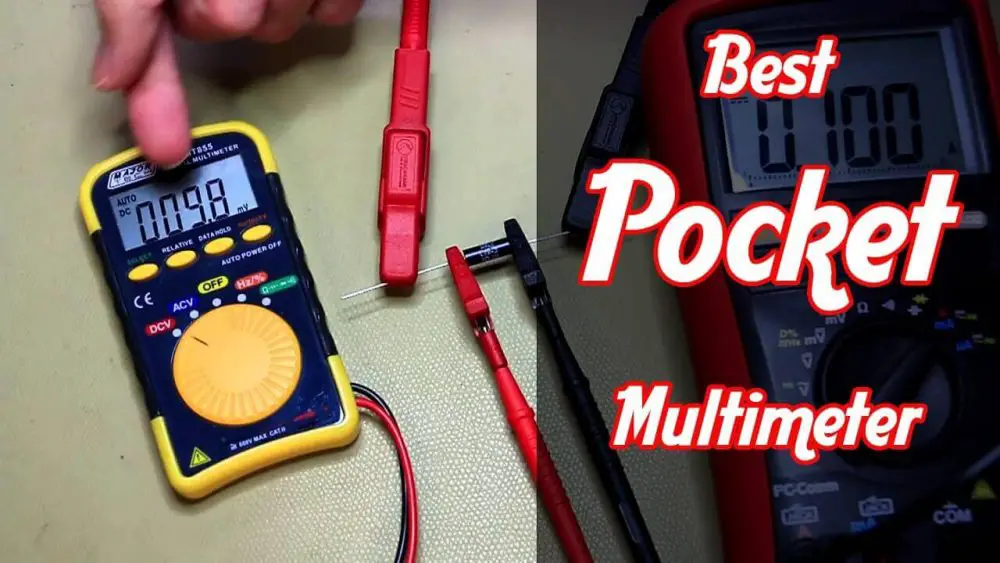How To Test Electrical Wires With A Multimeter
To check a live wire is always dangerous—extreme precautions are necessary when testing a wire. If the wire breaks, make sure they do not come into contact. It is also good to switch off the power until you are ready to test for voltage. A multimeter is the most accessible tool for testing the voltage of live wires. Although a multimeter tells you that the wires are live (meaning some current flows through them), it also tells you the voltage measurements.
In this way, smooth working with electric appliances depends on the error-free working of the wires. However, life is not always a bed of roses as you may have to face specific issues in the electric wiring hindering the power supply.
Are you facing an interrupted power supply and don’t want to wait until the electrician arrives? Then, you can test the electrical wire with a multimeter to confirm if it has an issue or working well. So, keep reading this post for the solution to all your wiring related testing!
Important Note:
Playing with live wires is quite dangerous; you should be very careful while dealing with devices and equipment related to electricity. Remember! It’s a hazardous business; a slight mistake can cause havoc. However, you can test a wire with utmost care and safety measures.
Multimeters are found in every home for the sake of petty electric tasks. You can use the best multimeter brands for checking the electrical equipment. It’s easy, but you need specific guidelines. So, let’s start!
Table of Contents
How To Check The House Wiring
The first phase for identifying the issues is to inspect the problematic wire. For this purpose, you need to check the house wiring. Here are the steps:
Step 1
It would help if you were careful while working with electric equipment. So, you must wear specialised electric safety gloves or rubber gloves used for dishwashing. If you have latex coated gloves, use them over the rubber gloves for safety purposes in hot wires.
Step 2
Set the dial to 250 Alternative Current (A/C) and touch the multimeter probes to a metal object or electrical box for checking if it is working well.
Step 3
You need to check the multimeter while attaching the probes to a wire from the central electricity. If the multimeter shows voltage between 110-120 volts ( those countries have 220 or 240 volts, measure their values accordingly), and the hot light is on, the wiring is hot.
The scale needle will be between 110-120 V If you are using an analog multimeter. The wire attached to the heating appliance, such as the oven, hob extractor, and water heaters, usually ranges from 240 to 250 V. You need not worry if you see a surge in the volts while checking such appliances.

How to determine if an electrical wire is hot
Once you have gone through the wiring inspection, you need to identify the wire that gets hot while in use. It is because the hot wire can cause a short circuit leading to worse accidents. Make sure that you have all the essential equipment with you while testing. It may require you to have a tester and multimeter, no matter digital or analog.
Step 1
You need to test the current or voltage as explained above under the section “how to check house wiring”. Don’t forget to take adequate precautions while trying the wires to avoid accidents.
Step 2
Wires are always hooked up with certain switches or buttons. Try to turn on the respective controls to let the electricity flow into the wire. Flip the switch twice or thrice to confirm that the wire is not hot during this.
Step 3
You have to check every wire this way. It will help you determine which one is hot. First, trace the root of the wire for how it is connected to the power board. Then, you can test the hot wires with fluke multimeters to identify the culprit wires while taking the voltage test.
Step 4
You need to check every wire one by one to confirm if everything is working well. The best way to mark a mal-functional or hot wire is to paste a white tape and write H for hot and N for No Current. It will help in assisting the electrician with fast working.
Read more: How to use a Multimeter for HVAC?
How To Test A Long Wire For Continuity
While testing the electric wires, you must not forget the lines that carry electricity in the backyard or lighten your garden. The continuity of power in the long wires is essential for smooth working. So, let’s go through the steps for checking long wires:
Step 1
It’s a common phenomenon that we try to resolve an issue without understanding it completely. It would be best if you did not do this while testing the continuity. Therefore, it is imperative to understand the basics of power continuity into the long wires.
Remember! The electric wires are not only the connectors but also resistors. In a long wire, the resisting capacity increases because the electrons collide with the protons more times than short cables. This may cause an interruption in the electric supply.
Step 2
At this step, you need to prepare the multimeter. Turn the multimeter on and set the OHMS settings. It should display an open-loop or 1. The multimeter is ready to test the resistance as it is a significant measurement scale.
Connect the probes while injecting the black search in the COM port and the red investigation in the voltage port. Be careful while attaching the probes in the correct jacks.
Step 3
Now, it is time to test a long wire for continuity. It is pretty straightforward. Use the best quality digital multimeter for checking resistance. For this, you need to keep the power button turned on. You can also use an analog multimeter as both works the same.
Step 4
While carrying out the test of long wire continuity, you need to set the multimeter at 200 OHMS. You must be thinking, why? Generally, the short ranges are used for testing electric parts or components, while the high range is used to test the wires.
Step 5
Now, attach the probes to the wire and see the readings. The wire has electric continuity if you get a reading of exactly three or any figure close to it. If the results are far less than 3, it means that the wire doesn’t have the continuity required for electric appliances.
Step 6
Once you are done with testing, make sure to turn the power supply off. Also, detached the probes!
Read more: How To Check 240 Voltage With A Multimeter
DIY tips and tricks for checking to wire
Hopefully, you have understood everything explained in this post regarding wire checking using a multimeter. A quick review of the tips and guidelines may help you more:
- Be ready for checking wiring by wearing electric working costumes and gloves
- Get the right gadgets such as testers, extra wires, and best budget multimeters
- Turn the electric supply off while working
- Adjust the setting of multimeters as per the guidelines
- Connect the probes into appropriate ports
- Observe and note down the readings carefully
- Mark the damaged or hot wires appropriately
Warning!!
Don’t mess with it if you have any doubt about your capacity to work with electric equipment. Don’t forget to consult with an experienced electrician near you!
Testing Voltage in a Wire
Before testing the voltage, check if the wires are live for that, use a voltage tester. A non-contact voltage tester is excellent, especially for wires that exist behind insulation or a socket, or a digital clamp meter will also tell you the voltage without any hazard.
If the wires are exposed or touch the metal frame, it is necessary to use a voltage tester.
A voltage tester would not tell you the amount of voltage, it can only show you the presence of voltage in the area. When you touch any wire or metal, it simply lightens up, or the tester produces a buzz or chirp to tell you that there is any voltage.
If your voltage tester tells you the wires are live, you may check the voltage by using a multimeter.
How to check voltage with a multimeter
Turn on the Multimeter
Move the selector dial to select the marked V with an alternating current symbol (~) next. Within this function, several numbers indicate the different ranges of voltage.
Set the dial selector to the lowest number that’s higher than the expected voltage in the wires. In the UK, this is 230V. Set the multimeter to the following number above 230V.
I am selecting the correct voltage range to increase measuring resolution and accuracy.
Not all multimeters require this step: For example, if your multimeter is auto ranged, then it has no numbers on the scale. You set the dial to V~, and the multimeter will select the correct range as it measures voltage.
Next, connect the probes to the multimeter. The black probe goes into the marked slot COM while the red probe goes into the slot marked VΩ.
To Test The Exposed Wires
- You should be extra careful when measuring the voltage of the exposed wire.
- Touch one of the multimeter leads on any metal surface nearby those wires. The metal object will act as the ground reference.
- Then use the other multimeter lead and touch the end of the lead on the exposed wires and check the voltage of each of the wires.
- House wiring consists of 3-wire circuits, only one wire has a voltage of about 230 volts, this is the live wire.
- The other two wires that are neutral and ground wires should indicate a reading of close to zero while measuring.
- Now measure the live wire and neutral wire to get the voltage present in the live wire. Mark the colour red and white tape on live and neutral wire to identify the wire. When you measure ground wire and live wire it will give you the voltage measures on a live wire.
- Lastly, measure the neutral wire and ground wire to check if there is any stray voltage in the neutral wire.
Read more: How to use an Automotive Multimeter
Frequently Asked Questions:
The main causes of electrical wires are Ageing of the wire, mechanical failure, degradation of the cable sheath, moisture in the insulation, heating of the cable, electrical overloading, rodent attack and UV exposure.
The simplest and easiest method to make an exposed wire safe is to use electrical tape on it. Electrical Tape can help to tighten the wire or loose wires that do not fit in the cap. You may use electrical tape over the exposed wire to protect yourself and save the house electrical wirings.
Conclusion
Use a multimeter, either an analog multimeter, an auto-range or a manual multimeter or a clamp meter; it is the most straightforward way to check the voltage in a house wiring, whether the troubleshooting is in the voltage that is a live wire or it is the neutral wire. We can use both wires to make circuitry with a multimeter. The multimeter will tell you the exact measurements of the default voltage or any higher values because of exposed wiring or any other wiring failures, or any stray voltage in the wiring system.





